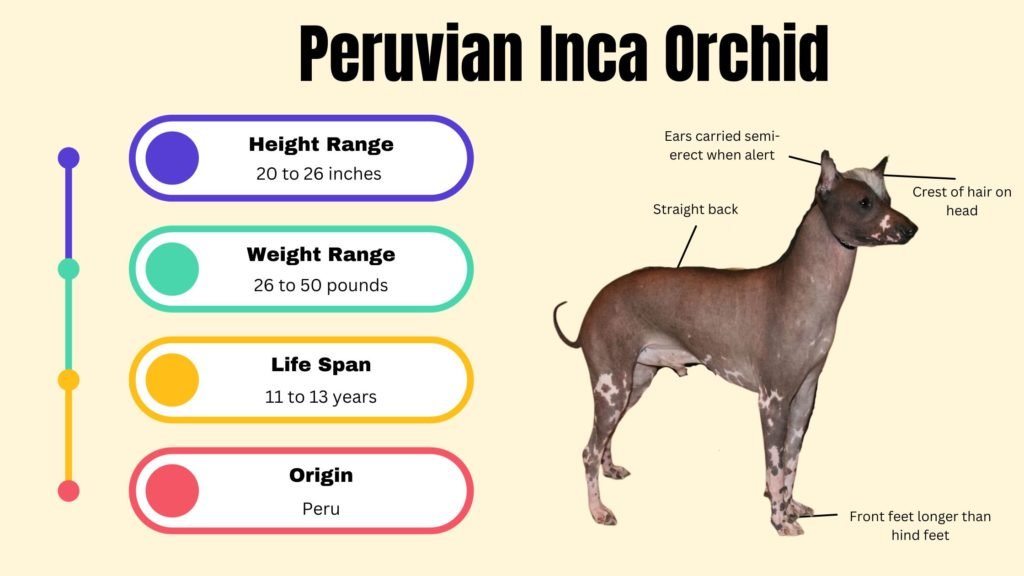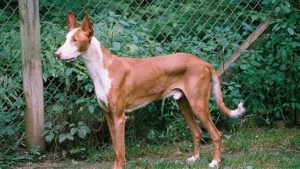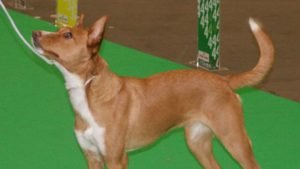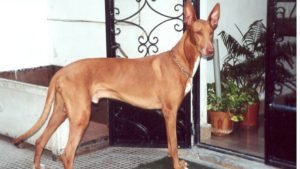Peruvian Inca Orchid History
The story of the Peruvian Inca Orchid dates back to the era of the Chimu, Chancay, and Inca civilizations in ancient Peru. Archaeological evidence in pottery and textiles suggests that these dogs were revered and cherished companions. They held symbolic significance in rites and ceremonies, elevating their status beyond domestic pets. The Peruvian Inca Orchid’s roots are intricately intertwined with the region’s rich history.
However, this ancient breed’s legacy almost stopped during the Spanish conquest. It was not until 1966 that an American dog enthusiast, Jack Walkin, rediscovered the Peruvian Inca Orchid. He brought a few specimens to the United States, sparking renewed interest in this almost-forgotten breed. Since then, Peruvian Inca Orchids have gained international recognition, primarily as fascinating show dogs and devoted pets.

Peruvian Inca Orchid Characteristics
The Peruvian Inca Orchid is a complex breed with many characteristics that make it unique. Ranging in size from petite to relatively large, these dogs can fit into almost any living situation. Despite their varied sizes, all Peruvian Inca Orchids share the same elegantly slim body, much like their sighthound relatives, such as Greyhounds and Whippets.
Most commonly known for their hairless appearance, they also come in a short-coated variety. The bald version is popular among allergy sufferers, as its hypoallergenic nature minimizes allergic reactions. However, this hairlessness also necessitates a stringent skincare routine. Owners must use specialized sunscreen to protect their skin from UV rays and bathe them regularly to prevent skin conditions.
Peruvian Inca Orchid Personality
Regarding personality, the Peruvian Inca Orchid is a bundle of contradictions. While they’re known for being extremely loyal to their human families, they can be wary and selective when meeting new people. This makes them less than ideal for families that frequently host guests but perfect for those who prefer a more introverted companion.
Their background as sighthounds has endowed them with keen observational skills. They quickly alert their families to unusual happenings, making them effective watchdogs. However, their alertness can also make them prone to chasing after smaller animals or running at the sight of a moving object, so a securely fenced yard is recommended.
Socialization from a young age is crucial for this breed to become well-adjusted adults. They are generally good with children, primarily when raised with them. However, their naturally reserved temperament means they’re best suited for families that can offer plenty of attention and engagement, as they are prone to developing separation anxiety if left alone for too long.
Peruvian Inca Orchid Life Span
The life expectancy of the Peruvian Inca Orchid ranges from 11 to 13 years, but this is contingent on a myriad of factors, including genetics, diet, and overall healthcare. Advances in canine medicine and a better understanding of dietary needs have contributed to extending Peruvian Inca Orchids’ life and quality of life. The breed’s genetic predisposition to specific ailments requires frequent veterinary check-ups, especially as they age. Owners should opt for a pet insurance plan early in the dog’s life to ensure affordable healthcare throughout their lifetime. This breed often thrives well into their older years if given a balanced diet, plenty of exercise, and regular medical care.
Peruvian Inca Orchid Family Life
Peruvian Inca Orchids are not just pets; they become integral family members. Their loyalty and affectionate nature make them exceptional companions for adults and children. Their adaptable temperament also means they can fit well into various living situations, from bustling family homes to quieter, single-person households. Given their propensity for separation anxiety, they do best in environments where they’re not left alone for long periods. The bond a family can cultivate with a Peruvian Inca Orchid is profoundly emotional and provides immeasurable comfort and companionship. However, the entire family must be on board with caring for this somewhat delicate breed.
Peruvian Inca Orchid Habitat and Diet
Regarding habitat, the Peruvian Inca Orchid needs a climate-controlled environment due to their hairless variety’s susceptibility to temperature extremes. Soft, comfortable bedding and shaded outdoor areas are must-haves. Diet is another crucial aspect of their care; they need a balanced diet rich in nutrients and low in fillers like corn or soy. Many owners opt for high-quality kibble, but some prepare homemade meals or go for a raw diet under veterinary guidance. Foods rich in omega-3 fatty acids can support skin health, particularly for the hairless variety. Always consult your vet for personalized diet plans, especially if your pet has allergies or other health conditions.
Peruvian Inca Orchid Temperament
The Peruvian Inca Orchid’s temperament is a fascinating mix of alertness and affection. They are not overly aggressive but are cautious around strangers, making them decent watchdogs. Their intuitive nature means they often pick up on their owner’s moods, providing comfort during stressful times. This emotional sensitivity makes them ideal companions for people looking for more than just a pet. They offer an emotional companionship rare among dog breeds, making them well-suited for people with emotional or psychological conditions like depression or anxiety.
Peruvian Inca Orchid Behavior With Other Animals
One of the most striking traits of the Peruvian Inca Orchid is its behavior around other animals. While their sighthound instincts may make them prone to chasing, early socialization can often mitigate this. They tend to get along with dogs of the same size and temperament but may take a while to warm up to smaller pets like cats. However, peaceful coexistence is entirely achievable with careful introduction and supervised interactions. This is especially true if the Peruvian Inca Orchid has been socialized from a young age to interact positively with other animals.
Peruvian Inca Orchid Coat Color and Grooming
The Peruvian Inca Orchid comes in two distinct varieties: hairless and coated. The hairless variant often has a range of skin colors, including gray, copper, and mottled patterns. Coated ones can come in various colors, such as black, brown, and tan. Grooming requirements for the hairless version include frequent bathing to remove dirt and skin oils and the application of moisturizer to prevent skin dryness. Sunscreen is also essential for outdoor activities. The coated variety needs regular brushing to remove loose fur and distribute oils. Contrary to popular belief, the hairless variety is not hypoallergenic and can trigger allergies.
Peruvian Inca Orchid Health
The Peruvian Inca Orchid is generally healthy but prone to specific health issues. These include skin issues, dental problems, and some hereditary ailments. The lack of fur makes the hairless variety particularly susceptible to skin infections, sunburn, and temperature sensitivity. Dental issues are another concern, as the hairless variety often has incomplete dentition, making dental hygiene a high priority. Regular vet visits are crucial for early detection and management of health conditions. Pet insurance is usually recommended to offset the treatment costs for these issues.
Peruvian Inca Orchid Price
The price for a Peruvian Inca Orchid can vary widely, depending on factors like lineage, breeder reputation, and geographic location. On average, you should pay anywhere from $800 to $3,000 for a puppy. Older dogs or those with health issues may be priced lower. The initial cost is just the beginning; vet bills, food, grooming, and other care requirements can add up. Thus, potential owners should budget accordingly and consider pet insurance to mitigate long-term costs.
Peruvian Inca Orchid Trainability
Training a Peruvian Inca Orchid can be both a rewarding and challenging experience. They are intelligent dogs but can also be independent and stubborn at times. Positive reinforcement techniques are the most effective, as harsh training methods often result in fear or aggression. Socialization from an early age is crucial, not just with humans but with other animals. Their sighthound lineage makes them prone to chasing, so recall training is essential for off-leash activities.
Peruvian Inca Orchid Care
Taking care of a Peruvian Inca Orchid is a long-term commitment that requires a thorough understanding of its unique needs. Whether hairless or coated, they need a balanced diet to maintain optimal health. Hairless Orchids require unique skin care routines to prevent infections and sunburn. Exercise is vital for this breed; however, due to their sensitivity to extreme temperatures, it is essential to plan physical activities during more excellent parts of the day. Regular vet check-ups are non-negotiable to monitor for potential health issues and catch them early.






